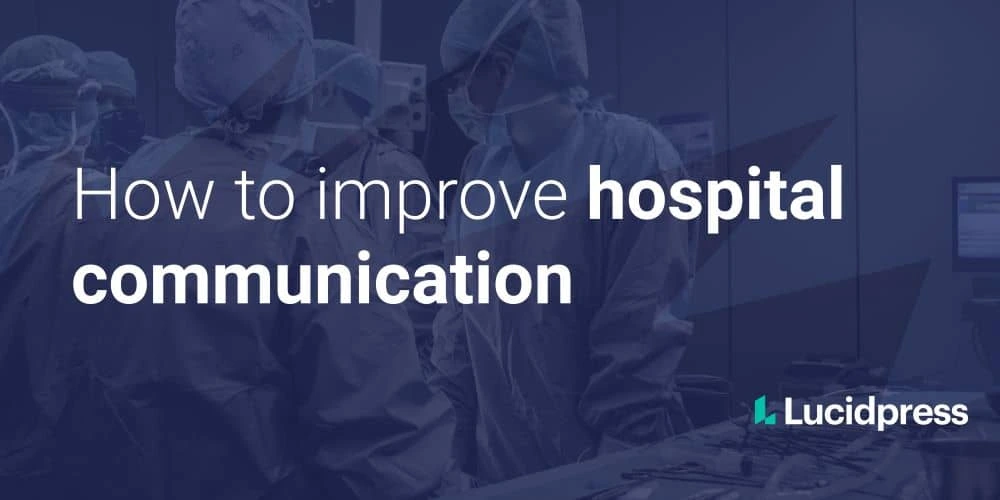In the healthcare industry, direct and immediate communication between patients and hospital staff is essential. The health of patients can depend on a clear and concise exchange of information. Too many of us may have personal instances where navigating the healthcare system was frustrating because of a lack of communication or a bad patient experience. Thankfully, we’ve seen a recent shift in the industry to a more patient-friendly approach with the emergence of online reviews, surveys that measure patient satisfaction and in-house training for better communication in hospitals.
But there are still major failures in communication between patients and healthcare personnel, along with failures among healthcare teams, that can lead to medical errors and patient harm.
Overall impact of communication failures
Current research has shown that failures in communication among healthcare professionals are one of the leading causes of patient harm and medical errors. In fact, 80% of medical errors involved informational or personal miscommunication. Additionally, 70% of sentinel events include communication breakdowns as one of the root causes of preventable patient injury. As more research has been conducted, it’s shown that ineffective or insufficient communication among healthcare team members is one of the biggest contributing factors to adverse events.
In order to improve patient safety and outcomes, healthcare organizations need to start improving communication in hospitals between professionals and patients, but especially among their own medical teams.
Ways to improve hospital communication
1. Encourage mobile collaboration
Most healthcare facilities still rely heavily on pagers as a means of communication. They are an effective way to get in contact with someone if you need to speak with them immediately, but they aren’t great for a two-way conversation that could include a litany of technical information. Many professionals also find it difficult to respond to emails as they hurry from patient to patient. A great solution is to use a mobile team communication app. Many healthcare organizations provide mobile devices to their staff as a way of bridging this gap between the restrictiveness of a pager and time-consuming email.
Over 80% of American adults own and use a smartphone, making it a convenient and effective form of communication between healthcare professionals and patients along with communication between healthcare professionals themselves.
2. Implement team huddles
A team huddle is a quick meeting between a healthcare team at the start of the day or shift with a specific focus on distributing pertinent patient information from the previous team. These mini-meetings include operational and care personnel ensuring that all healthcare providers are on the same page for a patient, ward, or department. Recent research has shown that daily team huddles have resulted in fewer interruptions during the day/shift and provide immediate clarification of issues. These meetings have also been shown to help teams identify pertinent issues of the day, giving teams a chance to prioritize and assess changes in clinical workload. Plus, they enhance staff cohesion and teamwork.
To ensure effective team huddles, follow these guidelines:
- Use a consistent location
- Set a standard time each day
- Make huddles mandatory
- Don’t sit, stand up
- Keep it short (15-20 minutes)
- Begin and end on time
- Keep the agenda limited
3. Provide communication training
According to Anthony Orsini, DO, president and founder of The Orsini Way and practicing neonatologist, communication training can achieve cultural change at hospitals by rewiring the way professionals communicate. Organizations that have used Dr. Orsini’s communication training have seen significant improvements in HCAHPS scores along with improved patient satisfaction.
Consider looking into a communication training program for your department or entire hospital staff. Pick one that includes specific training in communication techniques along with verbal and nonverbal language skills.
4. Facilitate cross-department collaboration
One barrier to effective communication especially during handoffs is the misunderstanding between professionals from different departments. Two healthcare professionals in the same field can communicate quite easily due to sharing the same jargon, experience and training. But specialists in different fields can easily miscommunicate especially in situations like operating rooms where several different types of caregivers are involved — surgeons, nurses, anesthesiologists, etc.
Cross-training and collaboration can be accomplished by having a nurse from one unit take a shift on another unit. Another way to accomplish this is to have departments learn about each other through meetings and having conversations outside of handoffs.
5. Templatize communication collateral
A final way to improve hospital communication is to templatize provider letterhead along with flyers for research studies and announcement displays. Using templates for in-house communications along with communications within the community can make it easy for doctors, nurses and other house staff to create on-brand content quickly, allowing them to maintain communication with patients and the community. With a platform like Lucidpress, healthcare organizations can provide their personnel with professional templates while also giving them autonomy to create their own content under approved parameters.
Implementing these five steps can help you improve overall hospital communication among your medical teams and between healthcare professionals and patients. Read our article about how to improve the patient experience to learn more.



